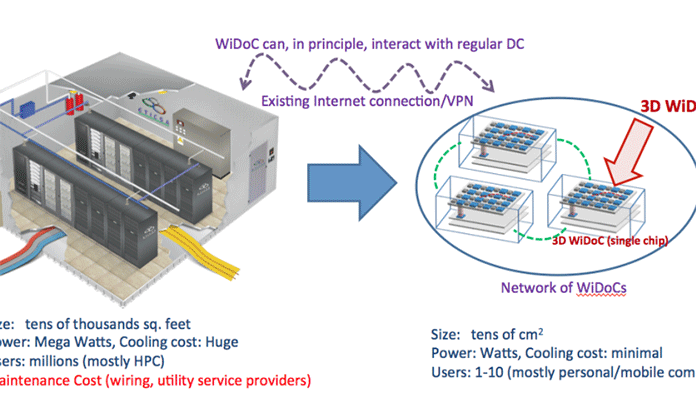High-performance computing clusters and datacenter generally require power, thermal, and area constraints to get control. They need lots of space and sophisticated cooling mechanisms to maintain the required performance levels.
Diana Marculescu and Radu Marculescu from the Carnegie Mellon University in collaboration with the Washington State University developed a new paradigm for big data computing. This project especially concentrates on a new Datacenter-on-a-Chip (DoC) design.
It consists of thousands of cores that can run compute and data-intensive applications more effectively. The cores communicate via a new communication infrastructure. This paradigm depends on the intersection of two major trends in integrated systems design. This is also known as low power and communication-centric design.
Radu Marculescu, said, “There are three goals in this project. We want to design small-world wireless architecture as a communication backbone for many core-enabled Wireless Datacenter on Chip (WiDoC) while establishing physical layer design methods for highly-integrated 3-D WiDoC suitable for low latency data communication. We hope to evaluate latency-power-thermal trade-offs for the proposed WiDoC platform by considering relevant big data applications.”
The innovation brings together highly novel and interdisciplinary concepts from network-on-chip (NoC), wireless and complex networks, communication circuits, and optimization techniques proposed at single-chip solutions to achieve data center-scale performance.
It will also help to establish an interdisciplinary research-based curriculum for high-performance. Many-core system design that was aimed to maximize the number of students attracted to this engineering sector.
Diana Marculescu, said, “It will create the great impact on numerous areas. Big data applications will benefit immensely from this new design paradigm. For example, social computing, life sciences, networking, and entertainment that proposed to achieve server-scale performance from hand-held devices.”
